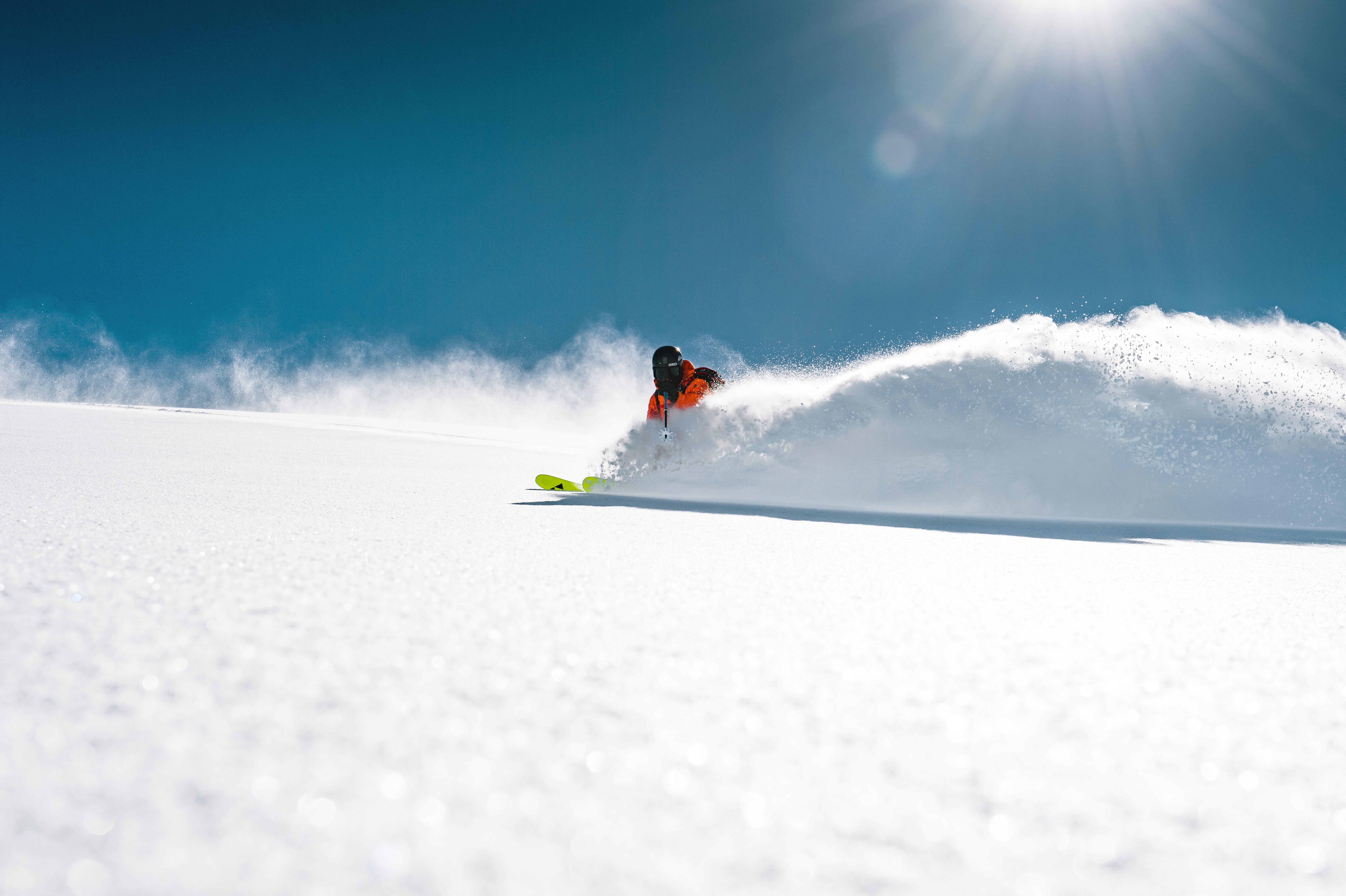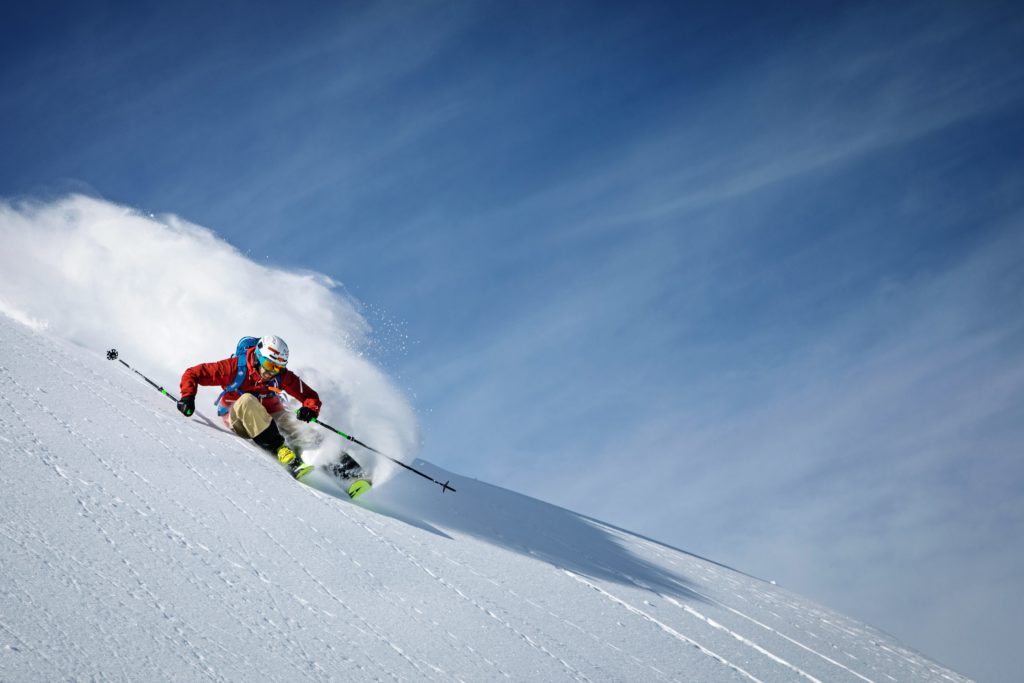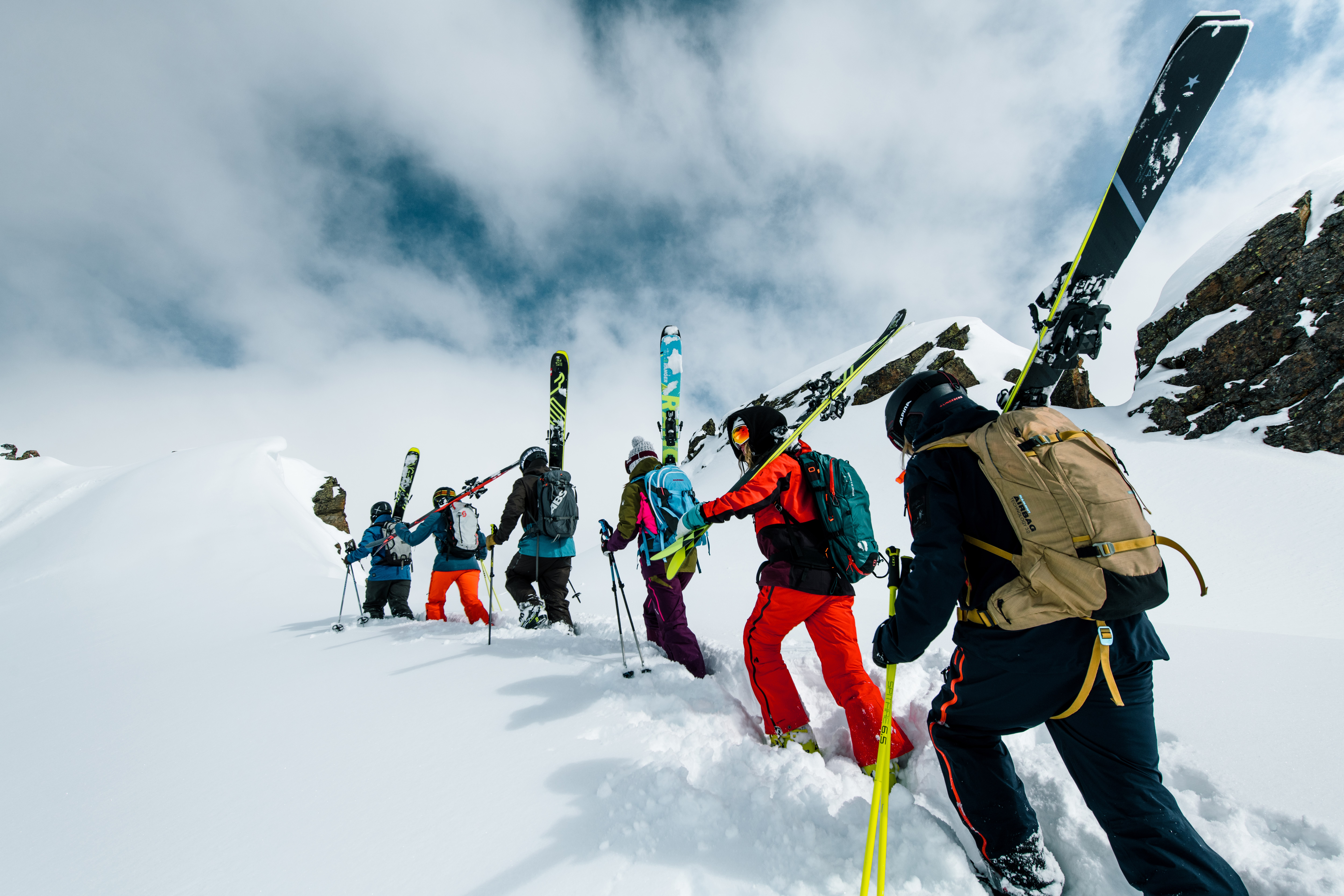Off-piste skiing

Off-piste skiing consists of skiing down the mountain off the marked runs. The snow conditions that you will find off-piste can vary (you will find classic powder, crusty, hard trafollée snow or even spring snow). The terrain can also vary rapidly (from a wide slope to a small couloir to reach a forest for example). All these variations require a minimum technical level and versatility.
Le ski hors-piste peut s’adresser à tout le monde dans le cas où vous en faites dans de bonnes conditions. Quel que soit votre niveau il est primordial de ne pas partir seul en hors-piste.
In this article we are going to give you some advice on how to enjoy an off-piste descent but also how to progress in this area.
First of all it is important that you define your off-piste skiing abilities, stay on terrain that is in line with your level and physical condition. Secondly, be alert and attentive to your surroundings.

The different off-piste skiing techniques:
The basic principle in off-piste skiing is balance, good stability and good balance will allow you to go down your face with much more ease. To achieve this you will need to have a straight chest and to separate the upper and lower body. During a turn the weight should be directed inwards. Be light and flexible.
Depending on the type of snow and the peculiarities of the terrain, different techniques will have to be adopted.
In the case of spring snow or light powder snow, the technique is not really different from that on the piste. Be precise in your supports, look far ahead to anticipate obstacles.
On powder snow, it will be important for you to evaluate the quality of the snow and its depth in order to adapt. Your turns will have to be flat and not on the edges, the feeling of bouncing on the snow will be important. Creating a rhythm with your poles can help you on the descent.
In powder snow, balance is essential, to do this you need to keep a balanced distribution of your weight on both skis. If you put all your weight on the back you will lose speed and control on your skis, conversely if you put too much forward you risk getting too tired and crashing your skis.
In crusty snow, your movements will be much more complicated and your skis will tend to get stuck in the snow. Opt for so-called “upstream stem” turns, bringing one ski towards the other, a turn between the snowplough and the parallel turn.
When off-piste with bumps, you’ll need your physique. The aim is to absorb the bumps and have a short reaction time to be able to change direction quickly.
Finally, on a steep slope, your turns will have to be very fast. These turns are called “jump turns”. The aim is to control your skis and your speed. The landing of the turn is done by cushioning the jump with a side slip.
In terms of safety
When talking about off-piste, it is essential to talk about safety. An off-piste outing is prepared beforehand. Checking the weather conditions and the risks of avalanches at the resort can be a solution. Always leave with an escort and warn those around you of your outing.

Remember to use the minimum necessary safety equipment, preferably an air bag, an ABS system, a DVA (avalanche victim detector) and a shovel to clear the snow.
You now have all the cards in your hands to go and have fun in the nooks and crannies of the resorts!